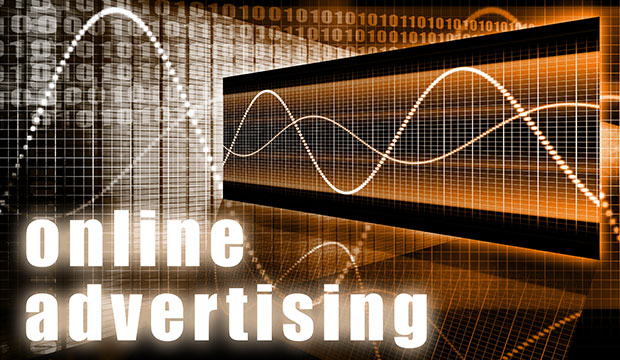AdTheorent, which offers a machine learning platform for advertisers, on Thursday announced AdTheorent Relationship Targeting.
This new product allows advertisers to harness the power of relationships with family members, cohabitants or friends to influence a consumer to take desired actions.
Word of mouth is the primary factor behind 20-50 percent of all purchasing decisions, AdTheorent noted, citing a McKinsey report.
Also, a recommendation from a trusted friend is up to 50 times more likely to trigger a purchase than a low-impact recommendation from a stranger.
The number of connections matters as well, suggested Calynn Krieger, SVP of strategy and marketing at AdTheorent.
“Conversion rates for in-market individuals who had six-plus connections who were also served advertisements outperformed by over 33 percent the conversion rates for in-market shoppers with only one connection,” she told CRM Buyer.
How Relationship Targeting Works
An advertiser defines its core audience through various avenues, such as CRM data, location data, site pixel data or purchase data. AdTheorent’s Relationship Targeting algorithms then leverage user device location patterns to identify groups of real-world consumer relationships.
AdTheorent’s Cross-Environment Map, which consist of more than 740 million unique device IDs mapped to more than 92 million U.S. households, lets AdTheorent identify core audience connections of family members, cohabitants and friends.
The company collects observed device IDs and device IP addresses to map to household locations using time, frequency location patterns and device grouping, Krieger said.
All AdTheorent data is anonymized, and does not contain personally identifiable information, she noted. Also, AdTheorent is fully GDPR-compliant.
Users’ location patterns change over time, Krieger pointed out, and AdTheorent’s data scientists “monitor and remap the Relationship Graph dynamically based on the changes to device signal connections and location.”
The Relationship Graph is a result of combining the Cross-Environment Map with AdTheorent’s Relationship Targeting algorithms, which leverage frequent location patterns between users derived directly from device location data on multiple occasions.
The Relationship Graph “is a map of real-world connections consisting of 1.3 trillion graphed connections, including an average of 14 friends and family members per user,” Krieger said.
It “informs our targeting and provides data for [AdTheorent’s] Machine Learning Platform when running campaigns where relationship plays a factor,” she explained. “We can leverage the graph and its data to solve client requests and answer post-campaign questions.”
The Cross-Environment Map and Relationship Graph add another dimension for advertisers by helping them cross-reference and identify circles of influencers, observed Cindy Zhou, chief marketing officer at Level Access.
The technology is “a good complement to the various data management platforms and ad tech platforms from companies such as Adobe, Oracle, Salesforce and Google,” she told CRM Buyer.
Currently, the Relationship Graph is available only within an ad campaign managed and run through he AdTheorent machine learning platform, AdTheorent’s Krieger noted.
The cost of leveraging the Relationship Graph is based on the campaign type and key performance indicators.
AdTheorent’s ML Platform
AdTheorent’s award-winning machine learning platform, which was developed in-house, analyzes “over one million advertising impressions per second, constantly scoring impression opportunities and serving ads only to those impressions most likely to drive an advertiser’s unique campaign key performance indicators,” Krieger said.
AdTheorent’s Relationship Graph stores data separately from its ML platform, she noted. The company’s data scientists use ML to identify and connect relationships contained within its Cross-Environment Map, or CEM, and “our ML platform references the Relationship Graph and CEM on every ad impression opportunity.”
The company can “develop ML models in micro-seconds to pull insights from the data and optimize in flight,” Krieger remarked.
Statistical Issues
Things have changed considerably since the release of the McKinsey report 10 years ago. For example, there has been a backlash against celebrity endorsements and recommendations, which used to bear a lot of weight.
“The basis of the McKinsey report on consumers being influenced by word of mouth is still valid, but that definition has expanded in recent years [to include] online reviews and social influencers,” Zhou remarked.
“Crowdsourced product and service reviews have increased — and in many instances, replaced — recommendations from friends and family,” she pointed out.
Certainly, influencer marketing is potent.
Seventy-five percent of national advertisers already had engaged in influencer marketing, the Association of National Advertisers found in a study released this spring, which focused on influencer marketing through social media. Forty-three percent planned to increase spending on it in the next 12 months, and 27 percent of those not yet using influencer marketing planned to do so within the following 12 months.
The influencer marketing industry will be a US$5-$10 billion dollar market in the next five years, according to Mediakix. That includes bloggers, social media and YouTube.
However, AdTheorent’s Relationship Targeting is different from influencer marketing, because “it identifies real-world relationships,” Krieger pointed out.
“Individuals have many social connections, but that doesn’t necessarily mean that we interact with those people in person or frequently, or that they influence our purchasing decisions,” she said. “What we’ve mapped are real-world connections — people that we know spend time together at home, or are friends and spend time together determined by location patterns.”














































Social Media
See all Social Media